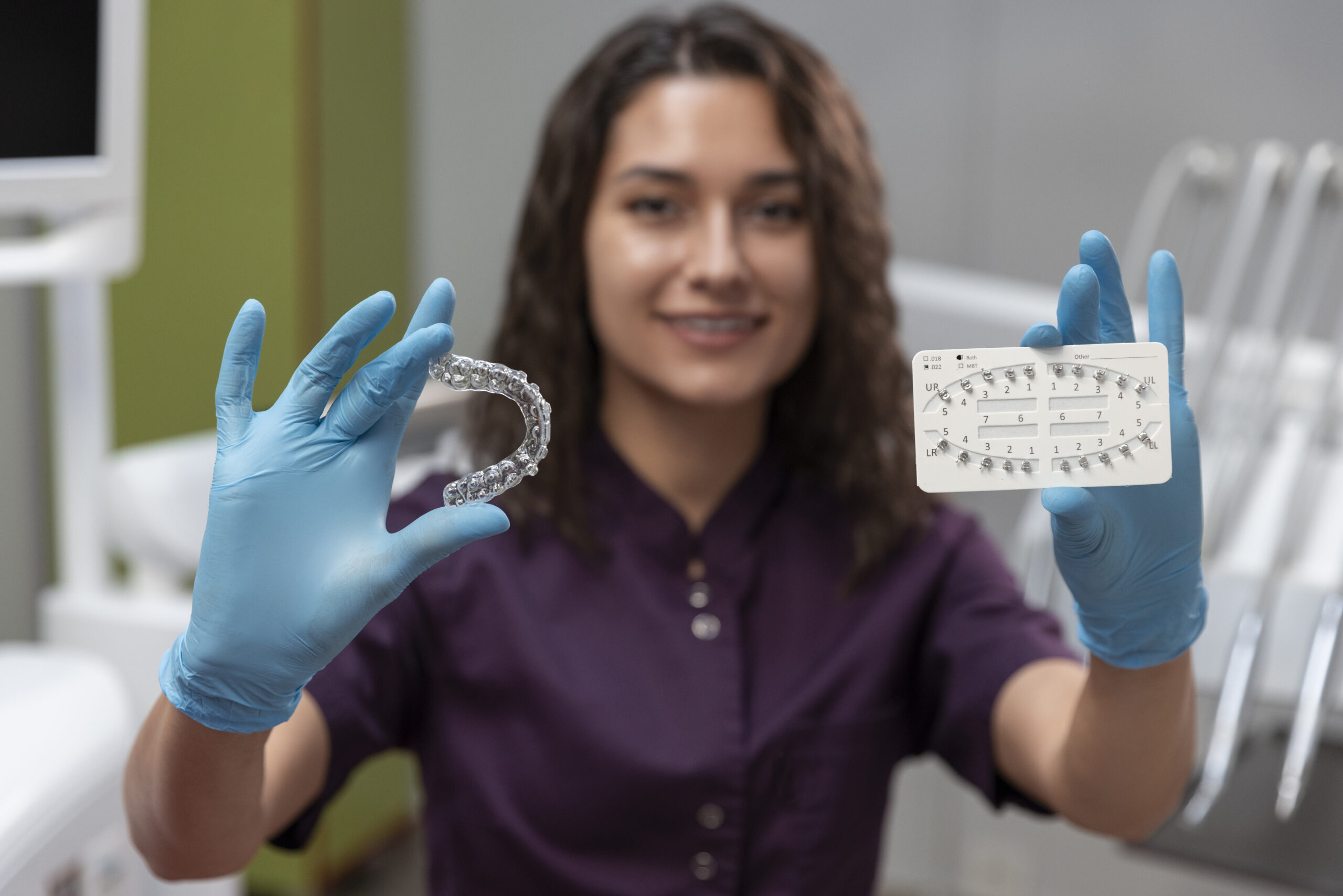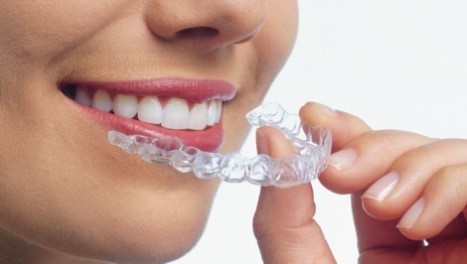Early orthodontic treatment plays a crucial role in setting the foundation for a healthy and beautiful smile. As an orthodontist in Mumbai, India, I am passionate about providing the best possible care for children. In this section, I will discuss the benefits of early orthodontic treatment and why it is important to address potential problems at a young age.
Addressing Potential Problems at a Young Age
One of the best aspects of our orthodontic practice is our dedication to early orthodontic treatment. We believe that it is essential to identify and address potential orthodontic issues before they become more challenging to treat. By evaluating children as early as age 7, we can identify problems such as overcrowded or misaligned teeth, bite issues, or jaw discrepancies.
Early intervention allows us to guide jaw growth, correct oral habits, and prevent more severe problems from developing. By addressing these issues at a young age, we can often minimize the need for more extensive treatment in the future, such as braces or orthognathic surgery.
Shortening Future Treatment Time
Another significant advantage of early orthodontic treatment is the potential to shorten future treatment time. By starting orthodontic intervention at a young age, we can take advantage of a child’s growth spurts and utilize their natural growth processes to achieve optimal results more efficiently.
For example, if a child has a narrow jaw or crowded teeth, early orthodontic treatment can create space for permanent teeth to erupt properly. By creating the necessary space early on, we can often eliminate the need for tooth extractions or more intensive interventions in the future.
Correcting Oral Habits and Guiding Jaw Growth
Early orthodontic treatment allows us to correct harmful oral habits that can impact a child’s dental development. Thumb-sucking, tongue thrusting, and mouth breathing are common habits that, if left unaddressed, can contribute to misaligned teeth or improper jaw growth.
By intervening early, we can help children break these habits and guide proper jaw growth. This can lead to improved facial aesthetics, better speech development, and enhanced chewing functions. The earlier we address these issues, the higher the likelihood of achieving optimal results.
Impact on Oral Health and Development
Effective orthodontic treatment goes beyond merely achieving a straight smile. It is essential to recognize the profound impact it can have on a child’s oral health and overall development. In this section, I will discuss how early orthodontic treatment can prevent oral issues from worsening and improve various aspects of a child’s well-being.
Preventing Oral Issues from Worsening
Early orthodontic treatment can prevent oral issues from becoming more severe and challenging to correct. Conditions such as malocclusion (misalignment of the teeth or jaws) or overcrowding can lead to difficulties in oral hygiene maintenance, tooth decay, gum disease, and even temporomandibular joint (TMJ) disorders.
By addressing these problems early on, we can create a proper alignment of the teeth and jaws, improving oral health and preventing future dental issues. Straight teeth are easier to clean, reducing the risk of plaque accumulation, cavities, and gum problems.
Enhancing Facial Aesthetics and Self-esteem
A beautiful smile can significantly impact a child’s self-esteem and confidence. Early orthodontic treatment not only improves the function and health of the teeth but also enhances overall facial aesthetics. When a child has properly aligned teeth and a balanced bite, they can feel more comfortable and confident in their appearance.
Addressing orthodontic issues early can prevent potential teasing or self-consciousness that may arise from having crooked or protruding teeth. By investing in early orthodontic treatment, we set the stage for improved self-esteem and a positive self-image as the child grows.
Improving Speech and Chewing Functions
Orthodontic problems can affect speech development and chewing functions. Misaligned teeth or jaw discrepancies can hinder proper articulation, leading to speech difficulties or lisps.
Additionally, malocclusion can cause challenges in biting, chewing, and swallowing, affecting a child’s ability to enjoy a varied and nutritious diet.
Early orthodontic treatment can correct these problems, allowing for better speech clarity and optimal chewing functions. By addressing these issues early on, we help children develop proper oral motor skills and ensure they can communicate effectively and enjoy a healthy diet.
Choosing the Right Orthodontist for Your Child
Choosing the right orthodontist for your child is a crucial decision that can significantly impact their orthodontic journey. In this section, I will discuss essential factors to consider when selecting an orthodontist and the importance of finding a practice that offers child-friendly care.
Considering Experience and Specialization in Pediatric Orthodontics
When seeking orthodontic treatment for your child, it is crucial to choose an orthodontist who has experience and specialization in pediatric orthodontics. Children have unique dental needs and require a practitioner who understands their growth and development.
An orthodontist who specializes in treating children will be proficient in diagnosing and treating common orthodontic issues seen in younger patients. They will have the knowledge and expertise to deliver effective treatment plans tailored to your child’s specific needs.
Exploring Different Treatment Options
Every child’s orthodontic journey is unique, and it is important to explore different treatment options to find the best fit for your child. Traditional braces have long been a reliable and effective treatment option, but advancements in orthodontics have introduced alternatives such as Invisalign.
Invisalign offers a more discreet and comfortable alternative to braces. These clear aligners gradually move the teeth into their desired position while being virtually invisible. Discuss the various treatment options with your orthodontist to determine which option aligns with your child’s needs, lifestyle, and treatment goals.
Understanding the Orthodontic Practice’s Approach to Child-Friendly Care
Children thrive in environments that cater to their specific needs and provide a positive and comfortable experience. When selecting an orthodontic practice, it is essential to ensure they offer child-friendly care. This includes creating a welcoming and friendly atmosphere, employing a staff experienced in working with children, and incorporating techniques to minimize anxiety or fear.
Check if the orthodontic practice has amenities such as a play area or games to keep children engaged and alleviate any apprehension they may have. A child-centric approach to orthodontic care will help ensure that your child has a pleasant experience throughout their treatment.
Taking the First Step towards Early Orthodontic Care
Now that you understand the importance of early orthodontic treatment and the factors to consider when choosing an orthodontist, let’s discuss the steps involved in starting your child’s orthodontic journey.
Scheduling an Initial Consultation for Assessment
The first step in the early orthodontic care process is scheduling an initial consultation with an orthodontist. During this appointment, the orthodontist will conduct a comprehensive evaluation of your child’s dental and facial structure. They will assess the alignment of the teeth, jaw relationships, and any potential orthodontic issues.
Based on the assessment, the orthodontist will develop a personalized treatment plan tailored to your child’s specific needs. They will explain the recommended treatment approach and answer any questions or concerns you may have.
Understanding the Financial Aspects and Insurance Coverage
It is important to have a clear understanding of the financial aspects of orthodontic treatment and explore any insurance coverage you may have. Orthodontic treatment is an investment in your child’s oral health and well-being, and many practices offer flexible payment plans to accommodate different budgets.
During the initial consultation, the orthodontic practice will provide you with a detailed breakdown of the costs involved and discuss available payment options. They can also guide you through the process of determining if your insurance plan covers orthodontic treatment for your child.
Preparing Your Child for Their Orthodontic Journey
Preparing your child for their orthodontic journey can help alleviate any anxieties or fears they may have. It is essential to communicate with your child, explain the importance of orthodontic treatment, and address any concerns they may have.
Emphasize the positive benefits of treatment, such as achieving a beautiful smile and improved oral health. Assure your child that the orthodontist and their team will be there to support them throughout the process and make their experience as comfortable as possible.
FAQs
As an orthodontist, I frequently encounter questions from parents regarding early orthodontic treatment. In this section, I will address some common questions to provide further clarity and information.
When should a child first visit an orthodontist?
The American Association of Orthodontists recommends that children have their first orthodontic evaluation by the age of 7. At this age, some permanent teeth have erupted, allowing the orthodontist to evaluate the child’s dental development and identify any potential issues.
What are the common issues that may indicate a need to visit an orthodontist?
Common issues that may indicate a need to visit an orthodontist include crowded or crooked teeth, excessive space between teeth, bite problems (underbite, overbite, crossbite), early or late loss of baby teeth, and oral habits like thumb-sucking or tongue thrusting.
How can orthodontic treatment benefit a child’s oral health?
Orthodontic treatment can benefit a child’s oral health in various ways. It can create proper alignment of the teeth and jaws, which facilitates better oral hygiene, reduces the risk of cavities and gum disease, improves speech development, and enhances chewing function.
What are the signs that indicate a child may need braces or other orthodontic treatment?
Some signs that may indicate a need for braces or other orthodontic treatment include crooked or overcrowded teeth, difficulty chewing or biting, speech problems, protruding or retruded jaw, and early loss of baby teeth. However, only an orthodontist can accurately determine the need for treatment through a thorough evaluation.
In conclusion, early orthodontic treatment offers numerous benefits for children, including addressing potential problems at a young age, improving oral health and development, and enhancing self-esteem. Choosing the right orthodontist who specializes in pediatric care and exploring different treatment options is crucial. By taking the first step and scheduling an initial consultation, you are investing in your child’s oral health and setting them on the path to a beautiful and confident smile.



